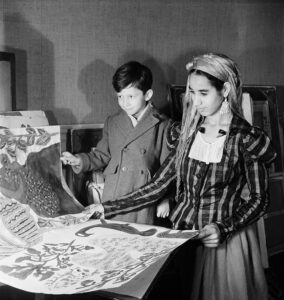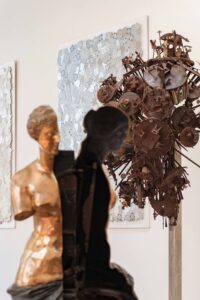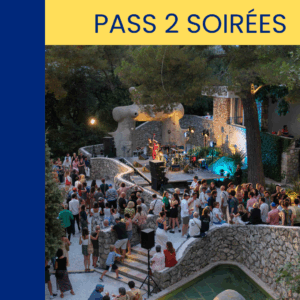
Invisible object (Hands Holding the Void), drawing
I undoubtedly discussed questions of art history and the artist’s role with Alberto Giacometti the most. In the first few years of my parents’ gallery, I did a little bit of everything. I was the go-between between Alberto and the atelier Mourlot which printed the lithographies for my father. I often went to see Alberto on rue Hippolyte Maindron. I went to get the “paper-report” sheets on which Alberto did the drawings that would become his original lithographies. He drew on special paper, with a lithographic pencil, then I took the sheets to Mourlot where the drawing was transferred onto a lithographic stone. We printed two or three proofs, tests that were more or less inked. I waited for these tests then took them to Alberto. He made corrections, sometimes he decided not to do the print. I took the tests he was happy with back to Mourlot, and the full print run was made. I then had to get him to sign each proof. One day he gave me a unique print of an engraving of Hands Holding the Void (The Invisible Object) with The Invisible Object drawn on the back. Completed before the war – the copper had oxidized throughout. “See if you can make anything out of this”. I went to Visat, however, the copper was too damaged and Giacometti would have had to rework it. I explained this to him, to which he replied “too bad!”. He gave me the first proof on which he had not yet corrected the position of the hands, as he had done in the other two proofs. There are only three proofs of this cooper – one is at the MoMA in New York, one was sold a while back at the Gheerbrant sale, and the one which Alberto gave me. I have always kept that engraving. It is unique and Alberto knew that in giving me that proof, I would keep it, and he also wanted to show me that he trusted me for the future. Alberto paid a lot of attention to me. He knew he had a strong influence on me, sometimes he didn’t hold back on pushing me out of my comfort zone, sometimes to the point of making me cry. I taught me to be demanding. I think what he liked about me was the desire to put printing techniques to the service of artists’ creativity. We’d often go to have a coffee in a bistrot, at the corner with rue d’Alésia, and there we’d talk about engraving techniques, the problems of reproducing a line accurately enough, the paper quality that could support inking as light as a whisper. Adrien Maeght
Alberto Giacometti (1901 - 1966)
Aimé Maeght was his art dealer. The artist’s first exhibition was presented at the Galerie Maeght in Paris in 1951. Working with Aimé and Marguerite Maeght, Alberto Giacometti would donate exceptional works, from the first works with surrealist influence until works at the end of his life in the 60s. The Foundation possesses the largest collection of the artist in Europe, with the Zurich Kunsthaus and the Fondation Giacometti in Paris.



